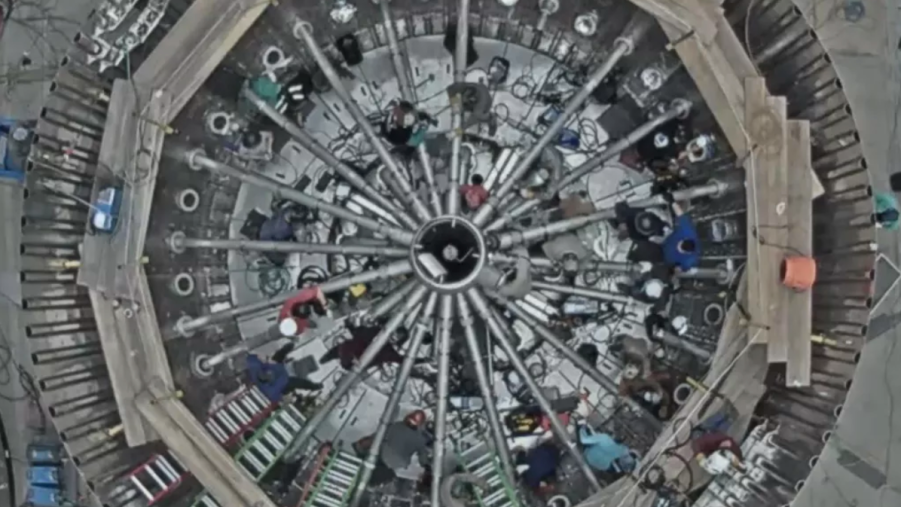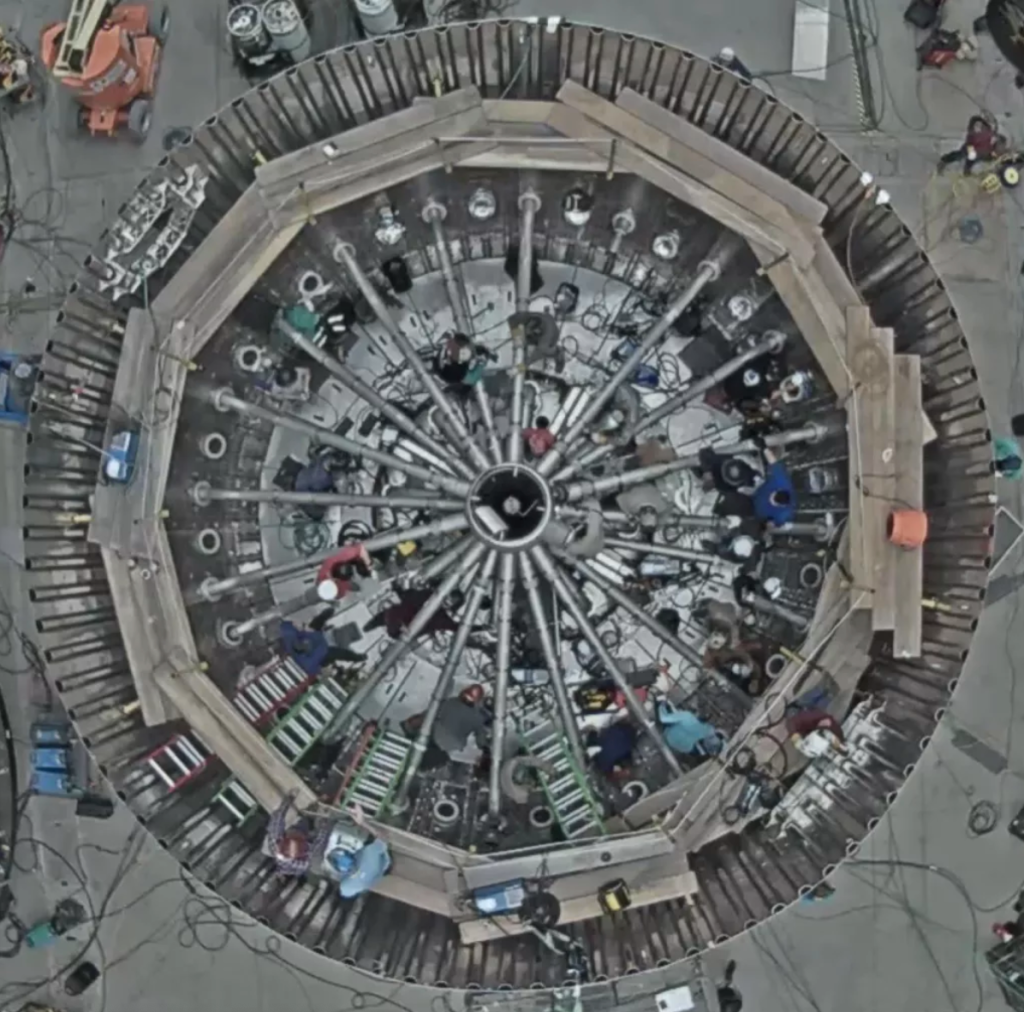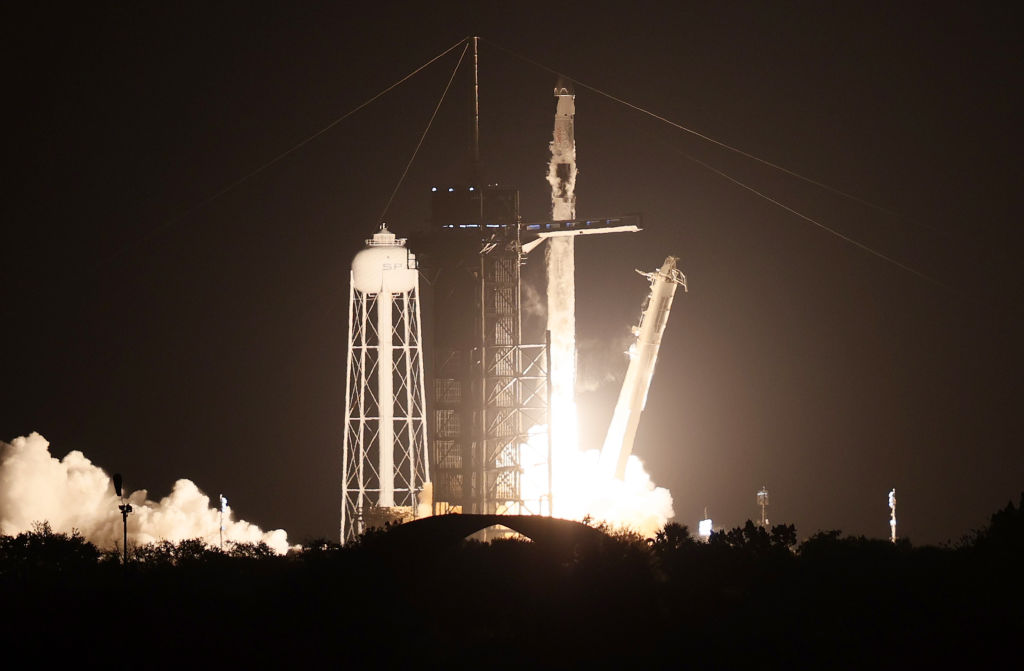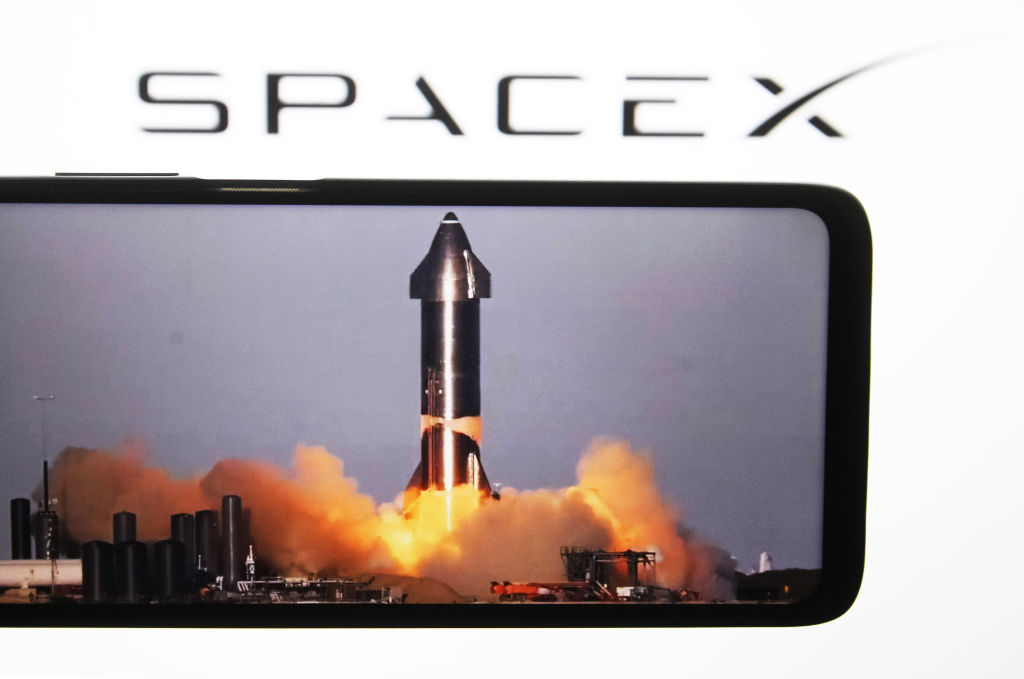
The SpaceX Way of Traveling Space Takes 37 Engines!
This is the business end of a SpaceX Super Heavy-Duty booster. For Elon Musk’s proposed 100-passenger spaceship, this will help propel it to Mars. Musk envisions colonizing Mars, which he says as humans we must do. Who are we to argue?
SpaceX founder Elon Musk wants a city on Mars in the next 100 years

“This is the fastest path to a self-sustaining city on Mars,” Musk said in a 2019 webcast. Last Thursday, he tweeted this image of the Super Heavy’s engine display. The tweet said, “Completing feed system for 29 Raptor rocket engines on Super Heavy booster.”
It almost looks like some complicated car wheel. Until you see the technicians working on it. This was shot at SpaceX’s Boca Chica site in South Texas.
A follow-up tweet says, “And that’s just the primary fuel lines! The maze of secondary plumbing and wiring is our greatest concern.”
This image is the main stage of the two-stage SpaceX rocket

While this is only the main stage the upper stage of the rocket will be 165-feet high. So the total height is around 400 feet. The booster alone is 40 feet in diameter.
All of the engines themselves are powered by liquid methane and liquid oxygen. That upper stage will contain six Raptor engines according to space expert Mike Wall. So a total of 35 engines are part of this plan.
The first stage, seen here, will be needed just to get the spacecraft out of earth’s gravity. The upper stage will power the craft to Mars and back.
There have already been prototypes launched into space

Some prototypes have already been launched to test some of the components including a three-engine prototype that was launched 6.2 miles up last year. But soon SpaceX will launch a Super Heavy orbital test flight. That should happen before Christmas.
The plan for that launch is for the booster and upper stage called Starship to lift off together. The booster will eventually land somewhere in the Gulf of Mexico. The upper stage will continue flying into orbit. It is expected to come down near Kauai in the Hawaiian Islands.
More flights are expected in 2022, with a fully up-and-running rocket launching in 2023. That is if preliminary tests go off without a hitch. The overall plan is to launch ten loads of 100 passengers up to Mars every year. Ultimately, the goal is for one million people to be living on the Red Planet within the next 50-100 years.
The city on Mars will develop organically

Right now there isn’t much of a plan for that city. It will develop over time based on discoveries there and inhabitants’ needs. With the reusable aspect of these rockets, Musk hopes the price for a trip to Mars will come down to a price that makes it possible for many to fly there.
Japanese billionaire Yusaku Maezawa has already booked a flight to the moon for 2023. The price tag for the round trip has not been made public. As for the price paid by Musk, he has said it will hover somewhere between two- and three billion dollars. However, you can be sure there is money to be made once Starship is up and running.



